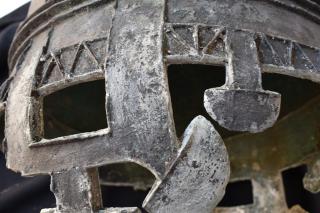Topic
Metal Recycling
The control and requisite knowledge to accessing and processing metals comprise more than technical aspects alone: they also encompass matters of social organisation and power distribution in time and space.

Metal recycling in Eastern Europe in the first Christian millennium
The control and requisite knowledge to accessing and processing metals comprise more than technical aspects alone: they also encompass matters of social organisation and power distribution in individual regions in different times. This research topic develops and answers these questions through interdisciplinary exchange between the humanities and natural sciences. The methodology and diachronic comparison are developed through close cooperation with the »Archäologisch-Historisches Handwerk [Archaeological Historical Crafts] (NAHM)« network.
The central problems include the recycling of Late Roman and Early Medieval silver and gold coins; whether and under what conditions they were used — outside of their original sphere of circulation — to produce jewellery, belts and other delicately forged products; who guaranteed access to the raw material, and how and where; and how this material was processed. The project also examines metal objects made of copper alloy, such as cauldrons and mirrors from the Hun period, and Byzantine lead seals from Eastern Europe, investigating not just recycling but also lead stopes through isotope analysis with project partners at Bochum’s Mining Museum, the Leibniz-Forschungsmuseum für Georessourcen [Leibniz Research Museum for Geo Resources].

